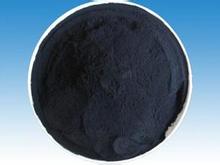Product Center
Contact Us

Guangdong Zhongke Water Purification Materials Co., Ltd.
Address: 1/F, Building No. 5, No. 255, Guantai Avenue, Nancheng District, Dongguan City, Guangdong Province
Address: No. 100, Qima Road, Jingjia Town, Huantai County, Zibo City, Guangdong Province (factory)
Address: Qilidian, Train Station North, Licheng County, Shanxi Province (factory)
Tel.: 0769-22817929 22817976
Fax: 0769-22424976
E-mail: gdzkpac@126.com
Website: www.gdzkjscl.com www.gdzkpac.com

 Your current position:Home > Product Center >
Your current position:Home > Product Center >
Powdery Activated Carbon
< ReturnActivated carbon is a kind of hydrophobic absorbent made from materials containing carbon through high-temperature carbonization and activation. Activated carbon is surfaced with micro pores and large specific surface area;
Ordering hotline: 0769-22817929
- Detailed introduction
Activated carbon is a kind of hydrophobic absorbent made from materials containing carbon through high-temperature carbonization and activation. Activated carbon is surfaced with micro pores and large specific surface area; therefore it can effectively remove chroma and odor, and eliminate most of the organic pollutants and certain inorganic substances in secondary effluent, which may contain some poisonous heavy metals. Factors that may affect the adsorbability of activated carbon include: properties of activated carbon; properties and concentration of adsorbates; PH value of wastewater; content of the suspended; and contact system and operation mode.
Activated carbon can effectively absorb chlorinated hydrocarbon, organic phosphorus and carbamate insecticides, and also biphenylene oxide, chloronitrobenzene, naphthalene, ethane, xylenol, phenol, DDT, aldrin, alkyl benzene sulfonic acid and many esters and aromatic compounds. In secondary effluents, there are also organic matters that cannot be absorbed by activated carbon, such as the intermediate degraded substances of protein, which is more difficult to be absorbed by the original organic substances. Moreover, Activated carbon is not so good at removal of THMS, the absorption rate is only 23-60%. Activated carbon adsorption can also be combined with other treatment methods, for example, ozone - activated carbon absorption, concrete- activated carbon absorption, Habberer process and activated carbon-diatomite absorption, which all make the absorption cycle of activated carbon extend, and the amount of use decrease, and treatment effect and range expand.
Activated charcoal filters can intercept the suspended pollutants in water, and the intercepted pollutants will be stuck in the interspaces in activated carbon. The pore size and factor of porosity of the filtering layer enlarges as the grain size of activated carbon gets larger, which means the coarse the grain is, the larger the space is for accommodating suspended substances. To be specific, when the grain size is large, the filtering capability, pollutant accommodation and interception rate are all improved. At the same time, when pores are large, there is more chance that the suspended substances to be transmitted to the next activated carbon layer, and with thickness is ensured, more suspended substances can be intercepted, so that the middle and lower filtering layers and the unit can work better.
Theoretically speaking, the interception capability of activated carbon is based on its surface area. When the flow velocity is low, the filtering capability of the unit works based on the screening of activated carbon and when the flow velocity is high, its filtering capability works based on the absorption of granular activated carbon surface. Moreover, the larger granular surface area provided by activated carbon is, the higher its absorption capability is.
Activated carbon has been used in the refining and decolorization of domestic pharmaceutical, chemical and food industries for many years. In 1970s, it has been used in industrial wastewater treatment. The factory practice indicates, activated carbon has excellent absorption in terms of the trace organic pollutants in water, and shows great performance when used for the wastewater absorption in textile, dyestuff, food processing and organic chemical industries. In general, activated carbon can remove the organic substances in water, such as synthetic dyes, superficial agents, phenols, benzenes, organochlorines, pesticides and petrochemicals, expressed by comprehensive indexes including BOD and COD. Therefore, activated carbon absorption has gradually become one of the main methods used in secondary or tertiary treatment of industrial wastewater.
Absorption is a slow attaching process of a certain substance to the surface of another substance. Absorption is a kind of interfacial phenomena, and is related to interface tension and interface energy. Besides, two forces can lead to absorption: one is the repulsive force of water solvent towards hydrophobic substances, and the other one is the affinity of solids towards solutes, and the absorption occurs in wastewater treatment is the combination of the two forces in most cases. Absorption of activated carbon depends on its specific surface area and pore structure directly; therefore it should be selected according to the water quality of wastewater and through test. For example, carbons with more or larger transitional pores should be selected for dyeing wastewater. In addition, ash constituent affects the absorption of activated carbons, the low the ash constituent is, the better the absorption is; when the size of adsorbate molecule is more similar to the pore diameter, the absorption is better. Concentration of absorbate can affect the absorption capability as well, and within certain concentration range, the absorption capability increases along with absorbate concentration. The pH value and water temperature can also affect absorption capability as it decreases as water temperature increases.







